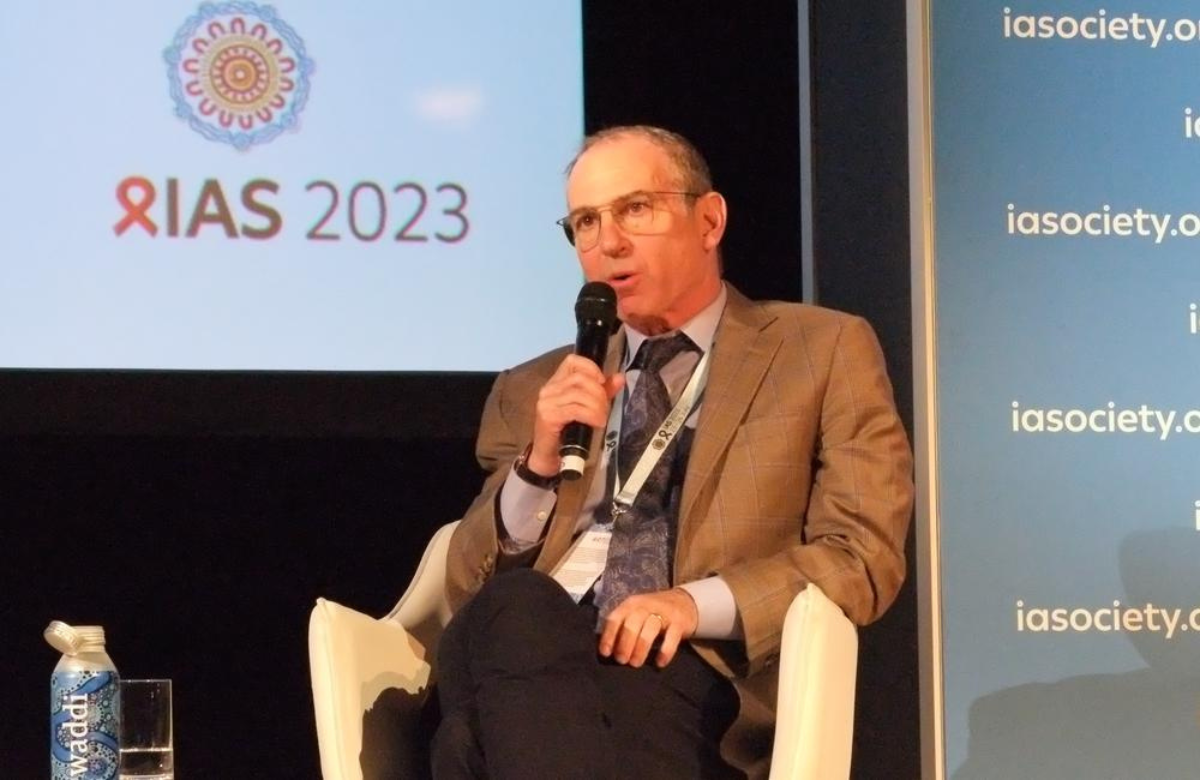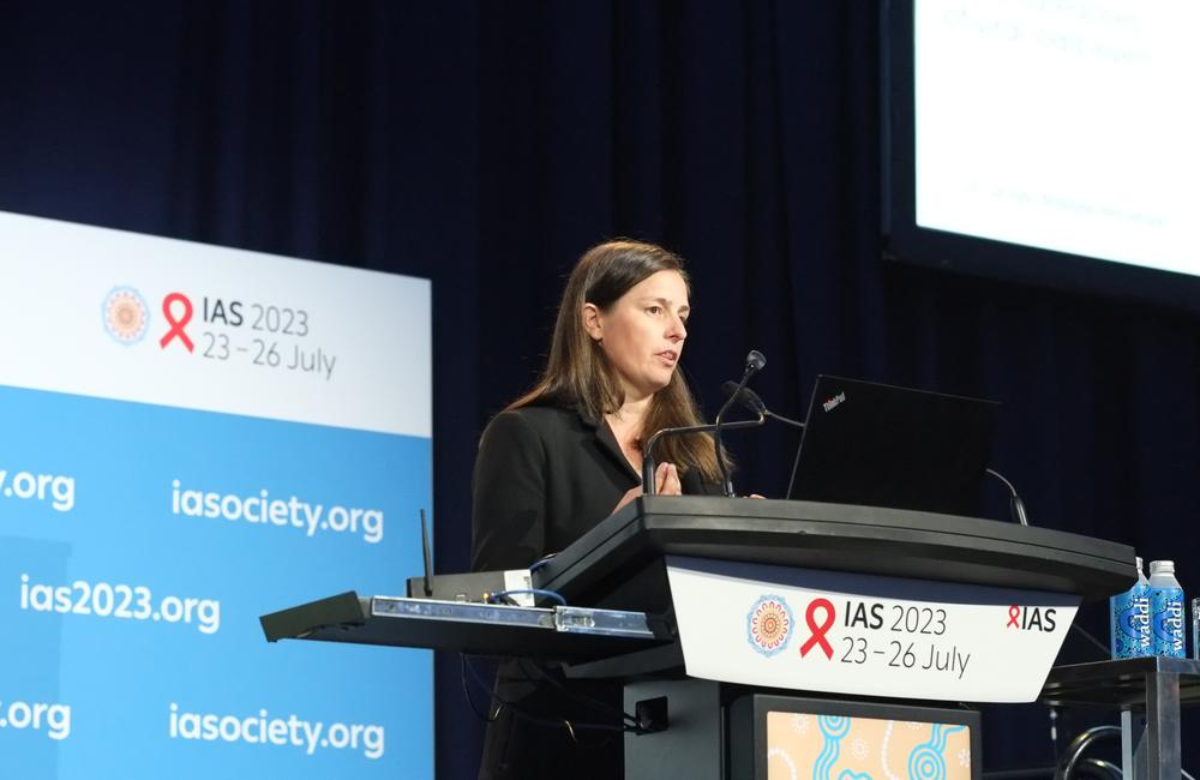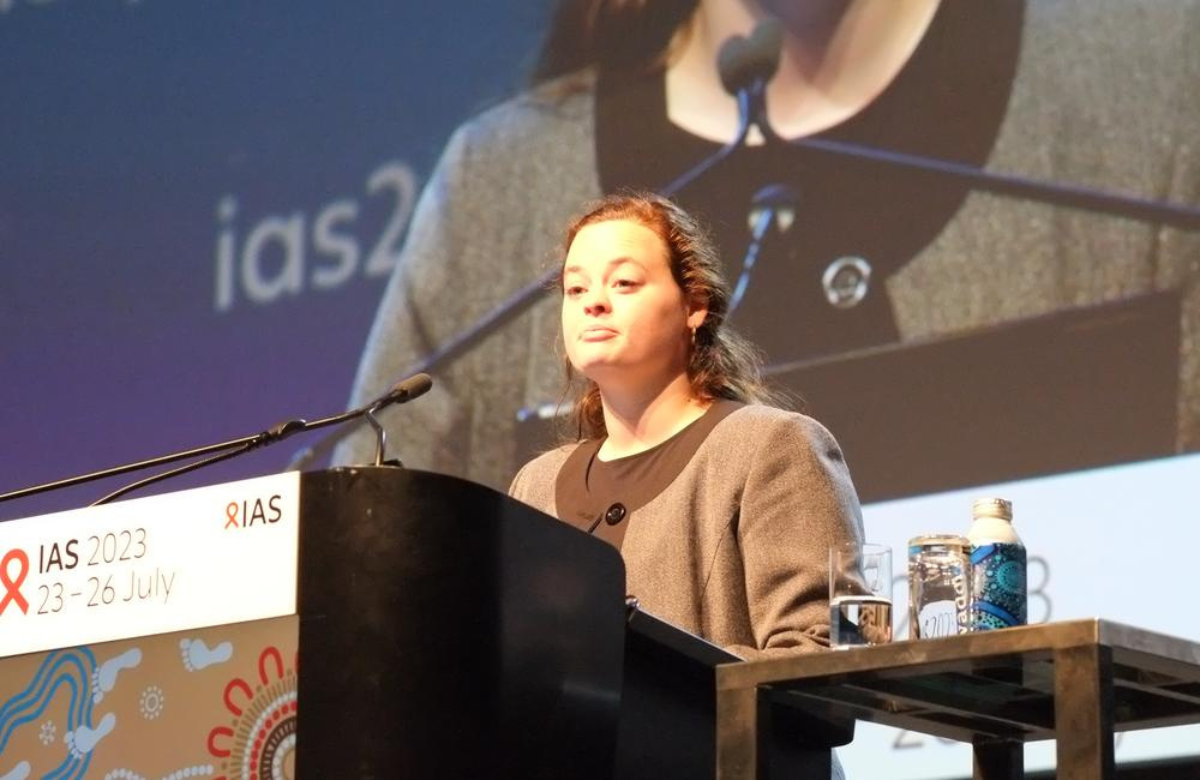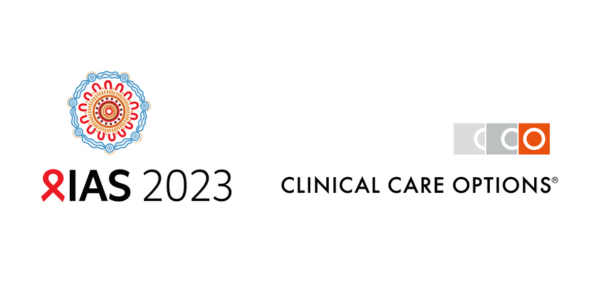Having problems reading this email? View it in your browser >>
|
||
 |
||
|
||
Contents
|
||
First possible HIV cure after stem cell transplant without CCR5 mutation | ||
 Geneva, Switzerland. Image credit: olrat/Shutterstock.com | ||
|
The findings were presented at the 12th International AIDS Society Conference on HIV Science (IAS 2023), taking place in Brisbane, Australia, this week. The man is in his early fifties and was diagnosed with HIV in 1990. He had been taking antiretroviral therapy (ART) since 2005. He developed a rare and aggressive type of cancer and underwent chemotherapy and whole-body radiotherapy. In 2018, he received a stem cell transplant. In previous cases of HIV cure, doctors have performed stem cell transplants from donors with a rare gene mutation (known as CCR5-delta-32). The mutation results in missing CCR5 co-receptors on T-cells, which prevents HIV from entering cells. In this case, no compatible donors with the mutation were available. The stem cell transplant was successful. However, the man experienced acute and chronic graft-versus-host disease and was treated with immunosuppressive medications, including ruxolitinib. Three years after the transplant, he started a closely monitored ART interruption in November 2021. The man continues to have undetectable HIV on standard tests 20 months after stopping ART, and ultrasensitive tests have become negative too. Stem cell transplants are too risky for people who do not need them to treat life-threatening cancer, and the procedure is intensive and costly. Nonetheless, each new cure provides more clues for scientists working on HIV cure research. | ||
Pitavastatin lowers risk of cardiovascular events in people living with HIV | ||
 Professor Steven Grinspoon at IAS 2023. Photo by Roger Pebody. | ||
|
A widely used statin medication reduced the risk of heart attacks, strokes and other cardiovascular events when given to people with HIV who would not routinely be prescribed it, according to research presented this week. The findings suggest that statins could potentially prevent as many as one in five major cardiovascular events or related deaths. REPRIEVE, a large phase III trial, was stopped ahead of schedule in April after interim results showed that pitavastatin lowered the risk of major cardiovascular events by 35%. Professor Steven Grinspoon of Harvard Medical School and Massachusetts General Hospital presented detailed results at IAS 2023, and they were simultaneously published in The New England Journal of Medicine. A growing body of research shows that people living with HIV are at greater risk for cardiovascular disease. This may be because of chronic inflammation that persists even with effective antiretroviral therapy, adverse effects of certain antiretroviral drugs, and higher rates of traditional risk factors such as smoking. Cardiovascular disease is associated with elevated cholesterol and triglycerides in the blood. Statins bring down low-density lipoprotein (LDL), or ‘bad cholesterol’, and are also known to lower inflammation. While statins have been shown to reduce the risk of cardiovascular events and death in the general population, their benefits for people with HIV were previously unclear. The REPRIEVE study began enrolment in 2015. It is the largest randomised HIV trial ever conducted, working across 100 sites in 12 countries in North and South America, Europe, Africa and Asia. The study enrolled 7769 people with HIV aged between 40 and 75, with a median age of 50. Nearly a third of participants were women, 41% were Black, 35% were White and 15% were Asian. Participants were taking antiretroviral therapy and most (88%) had an undetectable viral load. Most were taking regimens containing a non-nucleoside reverse transcriptase inhibitor (47%) or an integrase inhibitor (26%). The participants had no prior history of cardiovascular disease, had not previously taken statins, and were assessed as being at low to moderate cardiovascular risk. The study participants were randomly assigned to receive oral pitavastatin (4mg) or a placebo once daily. Adherence was reported as being very good over five years of follow-up. LDL cholesterol levels, which were similar at baseline, decreased by 30% in the pitavastatin arm, while staying the same in the placebo arm. Rates of major cardiovascular events (such as heart attack or stroke) were 4.8 and 7.3 per 1000 person-years, respectively, in the pitavastatin and placebo arms. The rate of major cardiovascular events was 35% lower in the pitavastatin arm, a greater reduction than seen in general population studies. Pitavastatin was generally safe and well tolerated. Side effects were similar to those seen in general population studies, and there were no unanticipated safety concerns. “This research suggests that statins may provide an accessible, cost-effective measure to improve the cardiovascular health and quality of life for people living with HIV,” said Dr Gary Gibbons, director of the US National Heart, Lung, and Blood Institute. “Additional research can further expand on this effect, while providing a roadmap to rapidly translate research findings into clinical practice.” | ||
An amber light: the WHO position when viral load is suppressed but detectable | ||
 Dr Lara Vojnov at IAS 2023. Photo by Roger Pebody. | ||
|
Dr Lara Vojnov, Diagnostics Advisor in WHO’s Global HIV, Hepatitis and STI Programme, launched WHO’s new policy brief: The role of HIV viral suppression in improving individual health and reducing transmission. The brief distinguishes between three categories of viral load test results: “Unsuppressed” (over 1000); “Undetectable,” which depends on the sensitivity of the individual test and can mean anything from 0-200; and a middle category, “Suppressed”, where a test detects HIV but at low levels that it cannot quantify (under 1000). In the past, viral load tests were seen as too complex and expensive for lower-income settings. Basing decisions about changing treatment on symptoms was seen as more cost effective. However, delaying changes to treatment until people became ill resulted in the development of drug resistance, which has severely limited second-line treatment options and cost lives. There is an urgent need to introduce viral load testing as a standard part of HIV treatment and care in all settings. Use of dried blood spot samples, rather than plasma, overcomes many logistical difficulties that have been barriers to the scale up of viral load testing in low and middle income countries. However, the clinical threshold in these tests for a definitely unsuppressed viral load is in the region of 1000 copies/ml. This is because the specimens used are smaller and this leads to results that are positive, below 1000, but not quantifiable – in other words, the test does not give a precise numerical value. Having a viral load in this range is not common. A viral load in the high hundreds is often transient, being on the ‘way down’ (when someone is new to treatment and their viral load is falling) or on the ‘way up’ (when treatment is failing or there are adherence problems that could lead to failure). Therefore, the new ‘suppressed’ category can be a warning of a future problem, just like an amber traffic light. For people who have a result that is ‘suppressed but detectable’, WHO recommends enhanced adherence counselling, and that a viral load test should be repeated in three months. If the result is still suppressed but detectable, then the regimen should be changed, as this may indicate low-level resistance or imminent treatment failure. In terms of transmission, Vojnov emphasised that the original message of U=U remains unchanged, which is that, “People living with HIV who have an undetectable viral load have zero risk of transmitting HIV to their sexual partners.” In order to quantify the transmission risk for the 'suppressed' category (under 1000 but may be above 200), Vojnov and colleagues undertook a review of studies that measured viral load and related it to transmission events. This review, published last week in The Lancet, identified just two transmission events where the last recorded viral load was below 1000 (one of 617 and one of 872). It concluded that, “people living with HIV who have a suppressed viral load have almost zero or negligible risk of transmission to their sexual partners". | ||
HIV treatment in the womb helped five baby boys stay undetectable off ART | ||
 Dr Gabriela Cromhout at IAS 2023. Photo by Roger Pebody. | ||
|
A study from South Africa presented at IAS 2023 identified five baby boys born with HIV who later stopped antiretroviral therapy (ART) and had persistently undetectable viral loads. The study shows that antiretrovirals can start to work as treatment for HIV-positive children even in the womb and highlights sex differences in post-treatment control. In the last decade, there have been several reported cases of children who are so-called post-treatment controllers: able to maintain undetectable viral load for months or even years, often after only a short course of antiretroviral therapy. Dr Gabriela Cromhout of the University of KwaZulu-Natal hypothesised that post-treatment control in children might be more common than previously thought. In 2015, Cromhout and colleagues set up a longitudinal cohort study, which currently includes 281 mothers with babies born with HIV. The babies have been monitored from birth. Many of the mothers had only been diagnosed with HIV and started ART late in pregnancy, while others had found adherence challenging. Nonetheless, 92% of the infants had received some ART from their mothers prior to birth via placental transfer. Among infants born with HIV in South Africa, viral loads are now significantly lower than in the pre-ART era, even more so since the switch to regimens based on dolutegravir, an especially potent drug. In this cohort, average viral loads at birth were 6950 among infants whose mothers had taken boosted lopinavir, but 1700 with use of dolutegravir and below 1000 in boys. While all babies started ART, adherence to treatment was inconsistent for many. Three years after birth, 37% of mothers and babies had dropped out of the study and 23% had a persistently detectable viral load. But 40% had suppressed virus, including 19% who had persistent undetectable viral load (below 20) with no ‘blips’. The study found evidence of differences in sex when it came to post-treatment control. Five babies maintained viral loads below 20 despite not taking any ART, or very little, from at most two months after birth. All five were boys, even though 60% of the babies in this study were girls. The child who has had an undetectable viral load for the longest stopped taking ART at the age of 40 months (3 years 4 months) and has now turned five. The other four resumed ART, but three are now enrolled in an analytic treatment interruption study where they will be taken off ART under careful monitoring for a pre-defined period. There were differences in the types of viruses acquired by girls and boys. The HIV in girls tended to be resistant or less sensitive to type 1 interferons, meaning that these innate immune defences would not work so well against them. The HIV in boys tended to be sensitive to type 1 interferons, meaning that the immune defences would work well against them. If the type 1 interferon response is influencing the type of viruses that are being acquired by boys, then therapies that strengthen this response further might narrow the range of viruses that could be transmitted and have a preventative effect, at least in children. | ||
Data analysis from Clinical Care Options
Engage in the analysis of data presented at IAS 2023, with rapid post-conference webinars by expert faculty on key HIV prevention strategies, treatment studies, and new and investigational treatment regimens, provided by Clinical Care Options. Watch the on-demand webinars, download the slides, and gain global perspectives with companion ClinicalThought commentaries. | ||
Connect with us |
||
Official conference partners |
||
|
NAM's news coverage of IAS 2023 has been made possible thanks to support from Gilead Sciences Europe Ltd and ViiV Healthcare. |
||
|
aidsmap is an award-winning, community-based organisation, which works from the UK. We deliver reliable and accurate HIV information across the world to HIV-positive people and to the professionals who treat, support and care for them.
NAM Publications
Cally Yard, 439 Caledonian Road, London N7 9BG Company limited by guarantee. Registered in England & Wales, number: 2707596 Registered charity, number: 1011220 To unsubscribe please click here Privacy Policy: www.aidsmap.com/about-us/confidentiality |